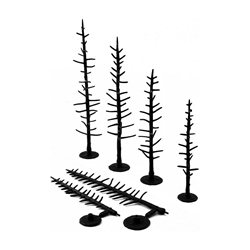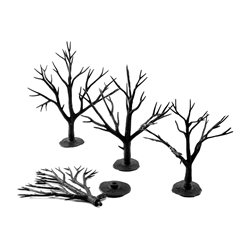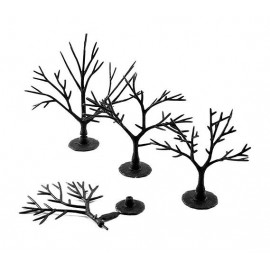The purpose of the saddle tank carried by some smaller steam locomotives is to provide a source of water for the...
No products
Product successfully added to your shopping cart
There are 0 items in your cart. There is 1 item in your cart.
Search Tips
Christmas and New Year
We are dispatching orders every weekday apart from Christmas Day, Boxing Day and New Year's Day.
If you select next day delivery at checkout, please note deliveries are not made on public holidays or Sundays.
The shop in Sandown is open 23rd and 24th December, then closed from 25th December, reopening on 30th December.
How to make your own trees
Trees are a big feature on most model railway layouts. There are some great ready to go trees from various manufacturers, depicting many different types and sizes of trees that work across all gauges. But did you know that you can also easily make trees yourself?
Making model trees is one of the easiest and likely one of the most successful bits of modelling that you can do. It helps that there is no such thing as a perfect tree for comparison, so every tree turns out unique, and so it should!
Start with the bare tree trunk and branches, even these can be modelled from scratch with bits of wire painted in a blend of browns and greys, but the easiest (and safest) way is to buy them ready-made. They are called tree armatures and they come in a wide variety of sizes and shapes.
Next, simply layer away. You can use clump foliage or lichen shaped and glued to the armatures to create the bulk of your tree's foliage. Try to study trees in your local area paying particular attention to how dense (or not as the case may be) the foliage is on both broadleaf trees as well as pines, willows and fruit trees, see how many different shades of green there are in the real-life leafy masterpieces. Doing this will no doubt help you to create a tree that doesn't resemble a lollypop!
Once you have created the rough shape that you want the tree's silhouette to project, it's time to get to work with the scatter. This will create the finer detail, shape and colour that will make your tree convincing.
You can't go wrong when making trees, you can always cut bits back, add more on, or change its shade and colour with scatter.
So why not give it a go, save some money and have some fun all at the same time!
Click here to receive the tips weekly in your mailbox. You can unsubscribe at any time.










